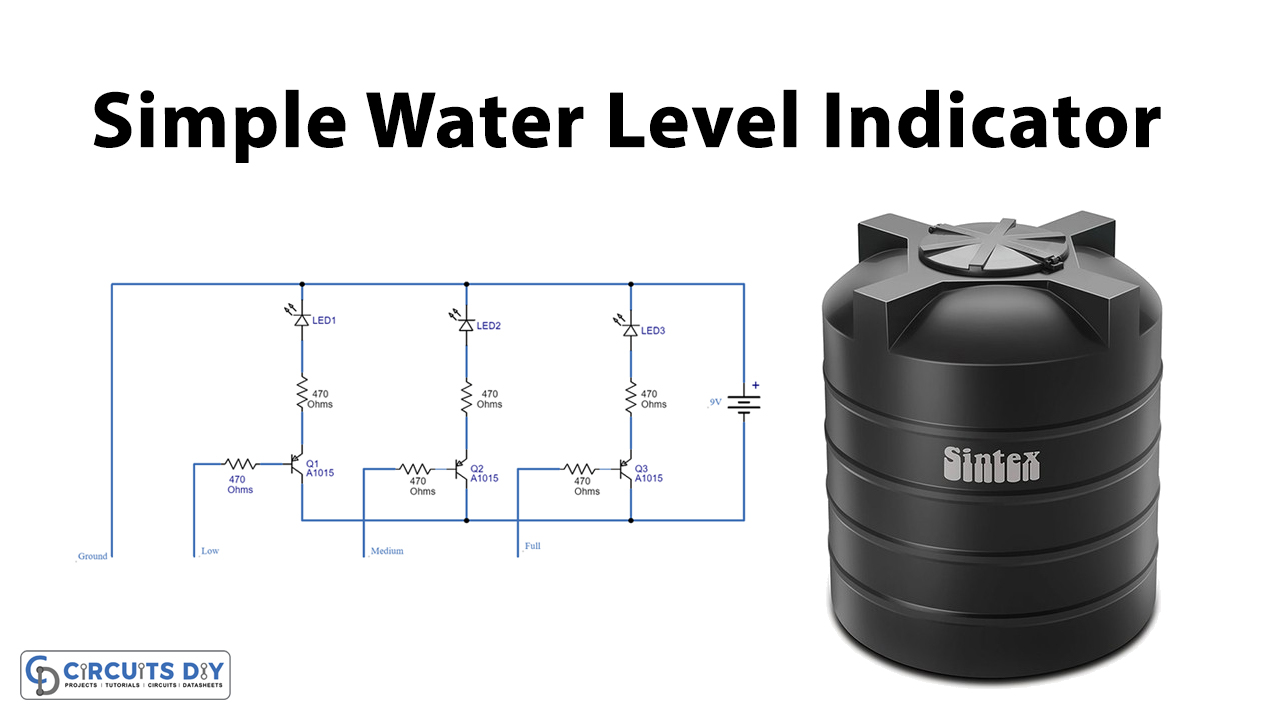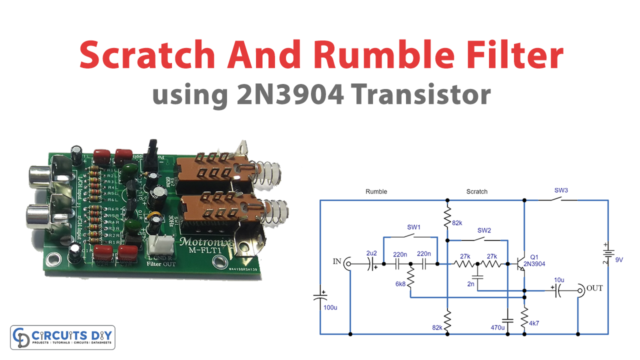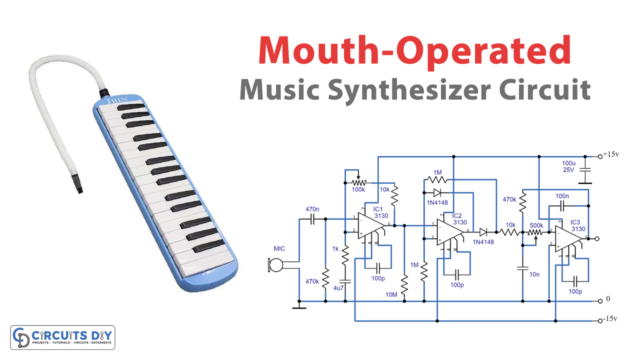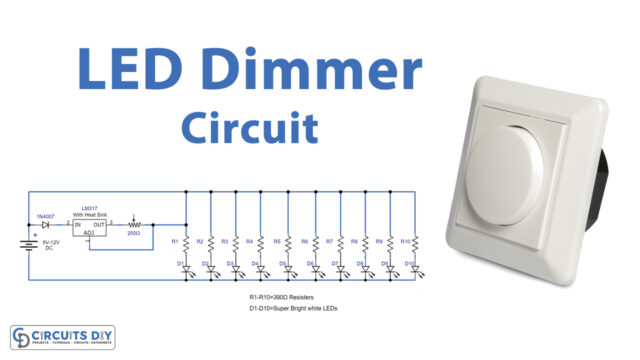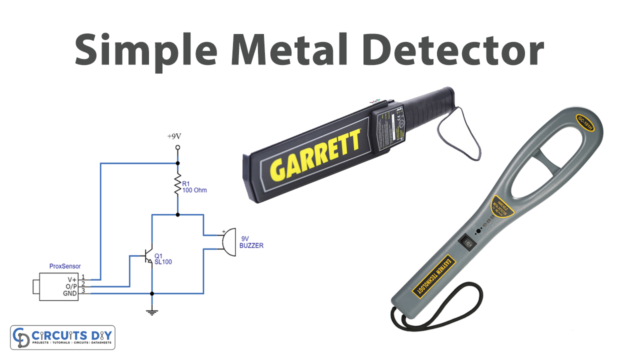A water level indicator circuit is a simple electronic mechanism to indicate the level of any conductive non-corrosive liquid in any vessel (overhead tank, reservoir & container, etc.).So, In this project, we are going to design a simple water level indicator using A1015 PNP Transistors.
This water level indicator circuit is based on 3 PNP transistor switches. Each transistor turns on to drive the corresponding LED when its base is supplied with current through the water by the electrode probes, the main advantage of this configuration is its low-cost & the capacity to relocate or modify the setup easily.
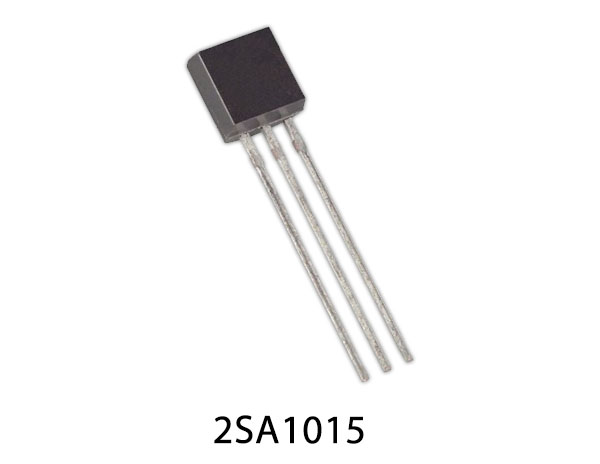
Hardware Components
The following components are required to make Water Level Indicator Circuit
| S.no | Component | Value | Qty |
|---|---|---|---|
| 1. | Breadboard | – | 1 |
| 2. | Battery | 9v | 1 |
| 3. | Connecting Wires | – | 1 |
| 4. | Transistor | A1015 | 3 |
| 5. | Resistor | 470 ohms | 6 |
| 6. | LED | 5mm | 3 |
A1015 Pinout
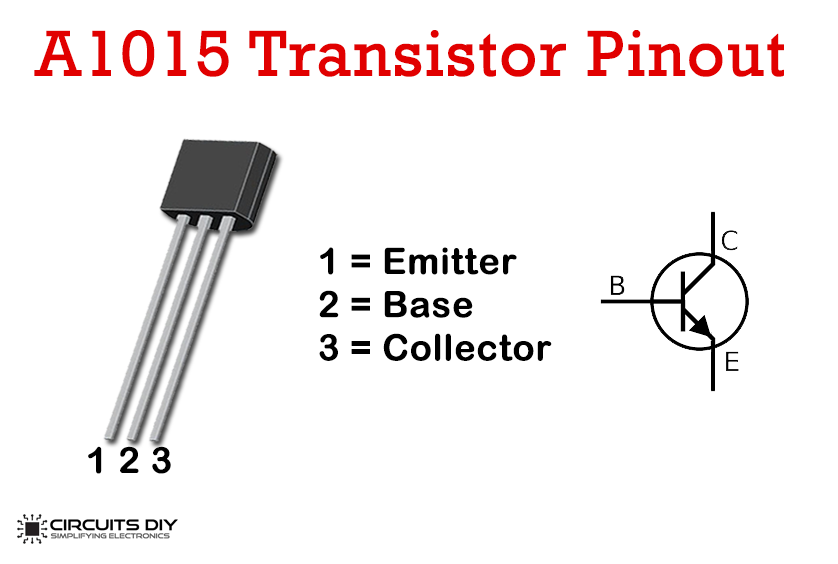
For a detailed description of pinout, dimension features, and specifications download the datasheet of A1015
Water Level Indicator Circuit
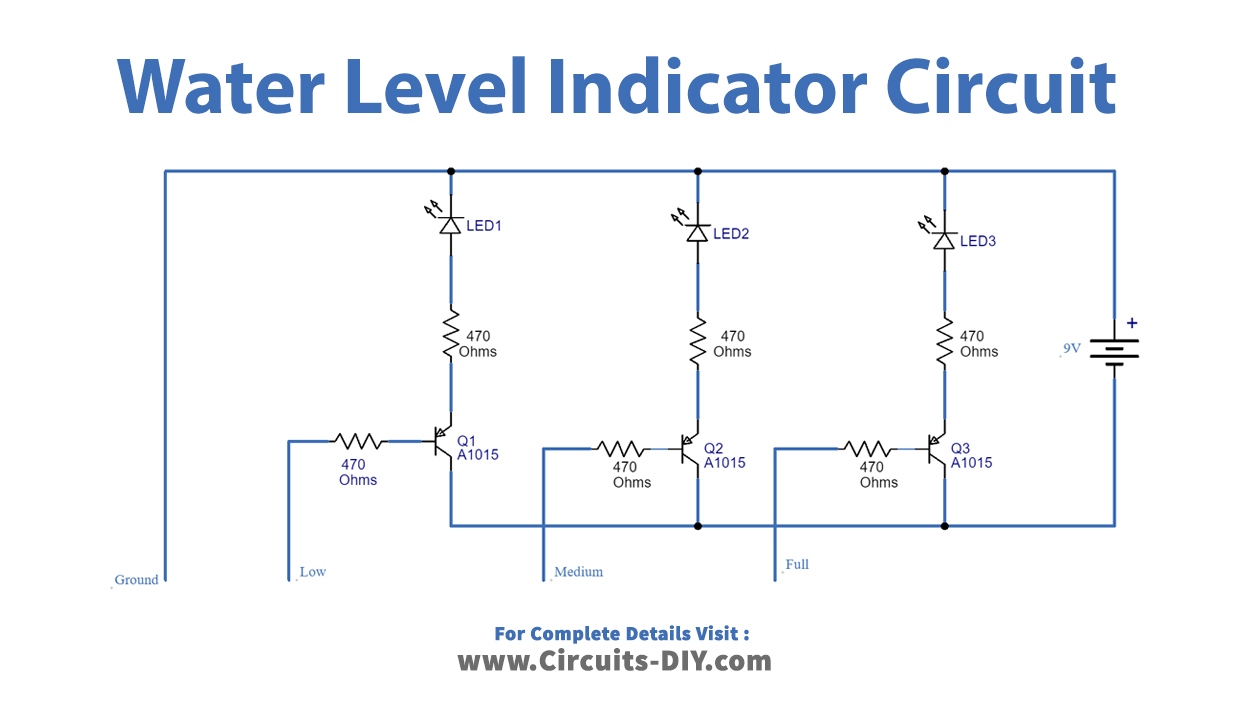
Working Explanation
This water level indicator circuit is very useful to see the water level in a tank. Whenever the tank gets full, we get alerts on particular levels. Here we have created 3 levels (low, medium, and full) with respect to the tank capacity. We can create indications for more levels. We have added 3 LEDs to indicate the three levels (Low, Medium, and Full).
The working principle of the circuit revolves around the use of a PNP transistor in switch configuration. The base of each transistor joins to an aluminum or copper wire with end insulation removed, acting as a probe. When water is rising the base of each transistor gets an electrical connection to 9V DC through water and the corresponding probe. This, in turn, makes the transistors conduct to glow LED and indicate the level of water. Setup the probes in order on a PVC pipe according to the depth and immerse them in the tank.
Applications
- Can be used in places such as Factories, Manufacturing complexes, apartments & homes
- An important part of wide-scale industrial processes such as cooling tower water level control, life station switches, tsunami warning systems, irrigation control, fuel tank level gauging & sump pumps


